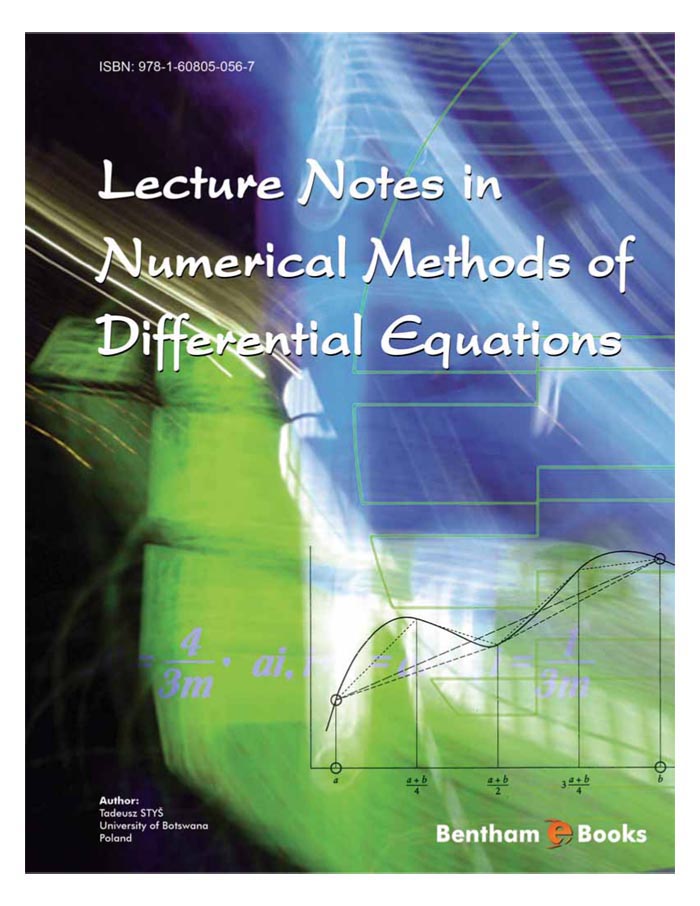This text is intended for science and engineering students taking a course in numerical methods of differential equations. In addition to basic knowledge of mathematical analysis and differential equations, it requires some background in numerical analysis and computing. The book covers the following methods:
-
Multistep linear difference methods
-
Runge-Kutta methods
-
Finite Difference Methods
Most of the material of this book has its origin based on lecture courses given to advanced undergraduate and early postgraduate students. The Mathematica (cf. [33]) modulae are included to each chapter to illustrate the methods by graphical and numerical solutions and to use them in solving of application problems.
There is extensive literature published on numerical methods of differential equations including books which cover undergraduate and postgraduate programmes (cf. [[1],[2],[3],[6],[8],[9],[10],[12],[13],[14],[19],[20],[22],[24],[25],[27],[28]]. As the book for a course in numerical methods, this text surves the methods with use of Mathematica modulae. There is also desire that the reader will find verity of finite finite difference schemes and examples which help reading the text.
Two techniques of error analysis have been developed and used to prove convergence of the considered methods. The first technique is based on the discrete maximum principle and is applied to prove uniform convergence of the methods for linear and non-linear differential equations. The second technique draws on spectral analysis and deals with average convergence of the methods in Hilbert space H.
Chapter 1 concerns linear difference equations and it constitutes an introduction to linear multistep methods and finite difference methods.
Linear multistep methods and explicit Runge-Kutta methods are presented with solution of practical examples in chapter 2. Also, in chapter 2, the boundary value problem for he secand order of a system of ordinary differential equations is solved by an optimal algorithm with use of the included Mathematica module solveBVP.
Throughout the chapters 3, 4 and 5, the discrete maximum principle is given and applied to prove uniform convergence of finite difference schemes.
In chapter 3, considerable attention is paid to the construction of finite difference schemes and their global and local truncation errors.
Chapter 4 is designed for linear elliptic equations. Different variants of finite difference schemes are considered. The most interesting of these are finite difference schemes in canonical form. For such schemes the discrete maximum principle has been stated and used to estimate the global error of the method. Helmholz equation is solved by Mathematica module solveHemholz.
Chapter 5 contains analysis of convergence of the finite difference scheme with weight for linear parabolic equations.
In chapter 6, the finite difference scheme with weight is applied to wave equation. These schemes have been solved by the method of separation of variables and by the module waveEqn.
Students are encourage to run Mathematica modulae, which are included in the tekst, to learn numerical methods by running the examples and solving tutorial questions with Mathematica as a system for Mathematics.

